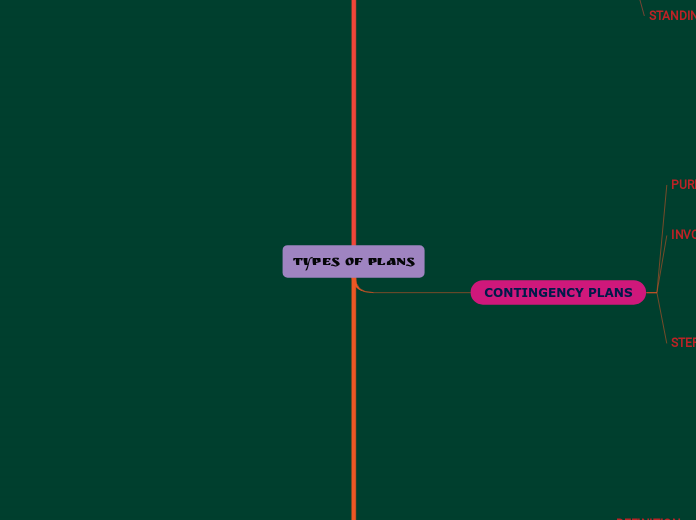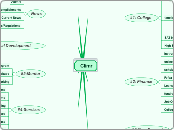TYPES OF PLANS
To name your story, you have to think about the overall message and what you want your audience to understand from the story. Also, make it relevant and easy to remember.
FUNCTIONAL PLANS
The ending of a story is essential. We all know that if the ending is weak, what happened before loses its importance. So make it unpredictable, but fair. A resolved ending answers all the questions and ties up any loose threads from the plot.
Often overlap, interrelate because each major activity is independent with each other.
EXAMPLE
Sales plans may relate to functional plans that will affect human resource plan.
This is the closure section of the story.
See examples of possible outcomes below:
- all problems have been solved
- it's clear how each one of your characters ends up
- your main character is transformed by the challenge
Human resource plans
Try answering these questions in order for you to come up with a closure:
- Have all problems been solved?
- Is it clear what happens with all your characters in the story?
- Has the challenged transformed your main character?
- How do the characters feel in the end?
Finance plans
Marketing plans
Try answering these questions to come up with a closure:
- Have all the problems been solved?
- Is there a clear picture of what happens with each character in the story?
- Has the challenge transformed your main character?
- How do the characters feel in the end?
This is the moment when the main character surpasses the last obstacle and finally faces their greatest challenge.
The climax usually follows one of these patterns:
- realization
- resolution
- choice
Type in your answer.
Plans classified by their use or function
CONTINGENCY PLANS
The middle of the story is where you add layers of complications that will lead to the end. Reveal more about the character's journey. Did their personality go through changes? How did they overcome the challenges? And as you build up the story’s central conflict, make it more personal to that character. Also, from the middle act, you have to lead into the final act.
STEPS OF CONTINGENCY PLAN
There wouldn't be any tension and excitement in your story if there weren't any obstacles in your character's way.
Designate people
Pro-forma financials
Develop schedule of resources
Establish develop mechanism
Develop plan
Formulate
Estimate
Identify
A story is nothing more than a character overcoming a series of difficulties to reach the desired goal. Obstacles usually create suspense and conflict. In overcoming obstacles, there is growth: weak becomes strong; hatred turns into love; sadness into happiness; wrong into right; lies into truth; or evil becomes good.
See a few examples below:
- stopping a meteor
- finding a killer
- finding love
Obstacles
INVOLVES
Your character(s) need(s) motivation in order to solve the challenge(s).
Preparing for unexpected and unwelcome event.
Secondary characters might also have motives that lead them to cross paths with the main character or which might trigger them to help the main character.
Preparing for predictable and quantifiable crises.
Why does your character need to confront this challenge? What does he/she expect to accomplish by solving it?
See a few examples:
- will marry in 3 days
- can fix the mistakes of the past
Motivation
PURPOSE
Each story has a main character and that character usually needs to solve a problem or challenge. The character's challenge is the one that creates tension throughout the story.
To allow an organization to return to its daily operation as quickly as possible after an unexpected event.
Type in any other challenges which other characters in the story need to face.
Other challenges
OPERATIONAL PLANS
In the beginning of the story (or the exposition), you will need to introduce the setting and characters. You might also want to introduce the main conflict. This part of the story is important because it gives the reader necessary background information and maybe even a first insight into a character’s personality.
STANDING
The setting (time & place) of a story can change throughout the plot.
Guide managerial actions when organizational repeated.
Your story can take place wherever your imagination will take you to.
For example: in an elevator, in an enchanted forest, etc. Don't forget to give details of the environment each time the setting changes, otherwise, the story can be confusing. Also, mention the seasons as each of them has unique weather and events.
E.g: Event organizer for sports event have standing plan to follow when fans return ticket purchased for a cancelled contest or a manufacturer may have a standing plan to follow when production managers order additional raw material.
SINGLE USE
Characters are essential to a good story. Usually, the protagonist(s) is/are the most affected by the plot. Introduce a character by focusing on their actions, interests, and occupation, as the physical appearance doesn't make a difference in most cases.
One-time plan specifically designed to meet the need of a unique situation.
Type in the name of your character.
E.g: Designing a plan to enlarge and renovate executive office.
Choose the type of your chacter:
Protagonist (main character)Antagonist (main character's opponent)Flat (stereotypical character)Round (his/ her personality develops throughout the story)Static (doesn't evolve as a person throughout the story)Dynamic (dramatical change in personality)Confidant (the main character trusts him/ her)Foil (contrasting character who enhances the personality of another character)Other
DEFINITION
Operational plans are those that very detailed in content and are used in carrying out the strategic plans.










